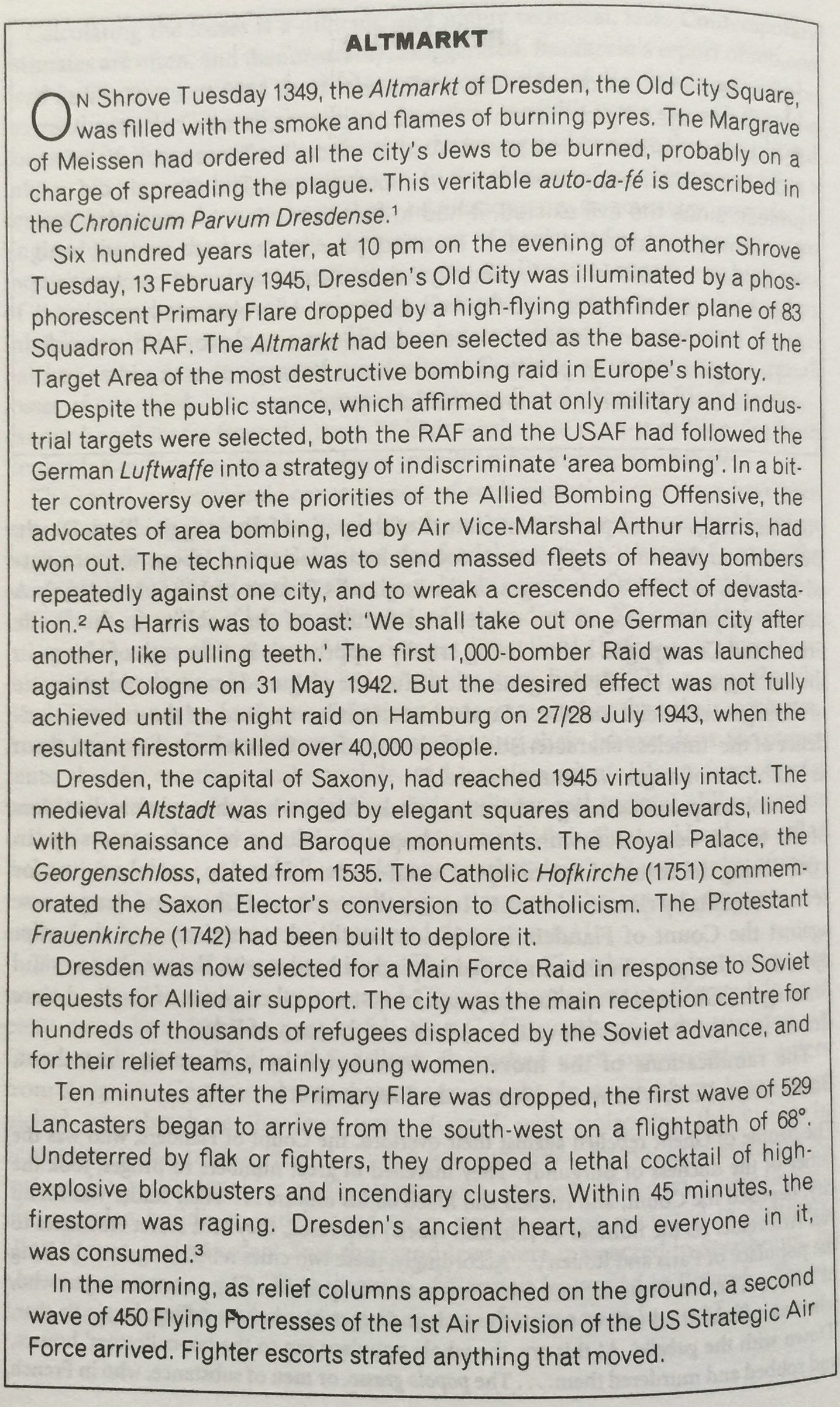2. Time
Time in Slaughterhouse-Five
Vonnegut & WW II - The Vietnam War
Slaughterhouse-Five is a novel written in 1968 by Kurt Vonnegut. The protagonist, Billy Pilgrim, is an American who survived the bombing of Dresden and who lives a superficial life after the war. Numbed by his experience, Billy starts to see life from an alien perspective which allows him to take a detached view of human existence, even to the point where he blithely agrees with his son's decision to enlist in the Vietnam War. While the novel is in many ways comic, this comedy is used to counter, and render accessible, the horror of war, especially the bombing of Dresden at the end of World War II and the bombing of Vietnam in the late 1960s.
Time is crucial in many ways to this novel. Vonnegut himself was in Dresden during the bombing of Germany during Second World War, which was a crucial moment, and turning point, in Modern history. His protagonist, Billy, lives in three times at once: 1. in his memory of his time in Germany, 2. in the 1960s ‘present’ when the Vietnam War is taking place, and 3. in the timeless dimension of the alien Tralfamadorians.
After this page on Vonnegut and World War Two, I look at the details of the novel itself in Timelines. Finally in Sci & Fi I give a brief history of sci-fi and the place of Slaughterhouse-Five in it.
🔹
Vonnegut & WWII
The Battle of the Bulge
Vonnegut was an American private fighting in Germany, and was captured toward the end of World War II, during the "Battle of the Bulge." The following paragraph and photos are from Wikipedia, "Battle of the Bulge":
The Battle of the Bulge (16 December 1944 – 25 January 1945) was the last major German offensive campaign on the Western Front during World War II. It was launched through the densely forested Ardennes region of Wallonia in eastern Belgium, northeast France, and Luxembourg, towards the end of World War II. The surprise attack caught the Allied forces completely off guard. American forces bore the brunt of the attack and incurred their highest casualties of any operation during the war. The battle also severely depleted Germany's armored forces, and they were largely unable to replace them. German personnel and, later, Luftwaffe aircraft (in the concluding stages of the engagement) also sustained heavy losses.
Dresden
The bombing of German cities like Berlin, Hamburg, and Dresden can be seen as a response to the German bombing of English cities like London, Coventry, and Bath. The following videos look at some of the German bombing: -1- -2- -3- -4- -5-. After Vonnegut's capture, he spent half a year as a POW in Dresden, which was rich in culture and art, had taken in many war refugees, and had little military or strategic importance. In the following video, Vonnegut speaks (from 5:00) about his experience in Germany and about his opposition to bombing of civilian targets.
The following pages on the bombing of Dresden are from Europe: A History (Norman Davies, 1996, pp. 414-415):
🔹
The Vietnam War
For historical context about the Vietnam War, see the timeline in The Cold War.
Slaughterhouse-Five deals openly and explicitly with the bombing of Dresden, yet at key moments Vonnegut suggests that what he's writing about also applies to the American bombing of Vietnam. It's hard to grasp the scale of this bombing, yet the following (from Wikipedia's entry, "List of Bombing Campaigns of the Vietnam War") gives a sense of the numbers involved:
The bombing campaigns of the Vietnam War were the longest and heaviest aerial bombardment in history. The United States Air Force, the U. S. Navy, and U. S. Marine Corps aviation dropped 7,662,000 tons of explosives. By comparison, U. S. forces dropped a total of 2,150,000 tons of bombs in all theaters of World War II.
The following video paints a brief, sad picture of the bombing:







